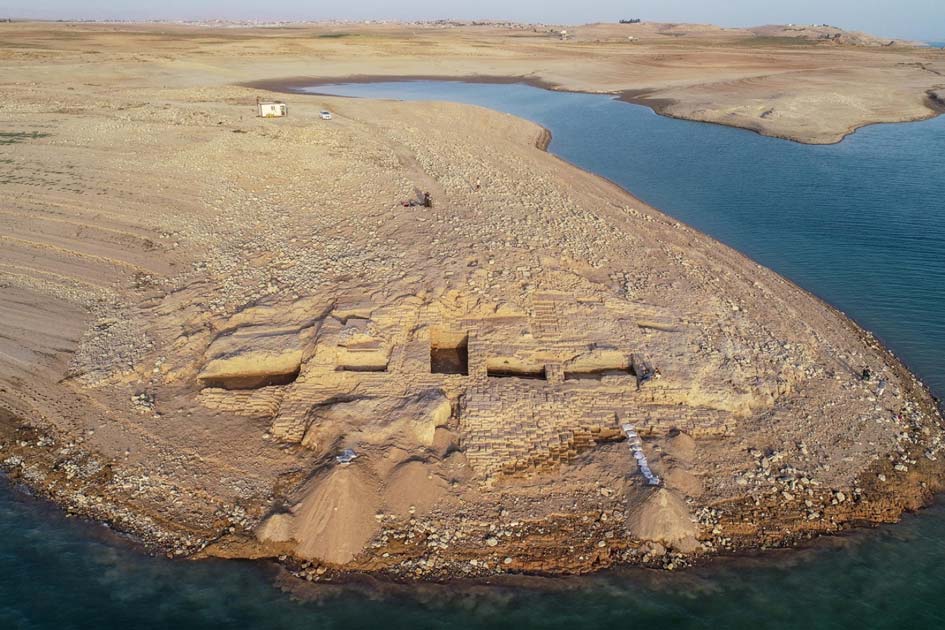3400-year-old palace from a mysterious kingdom surfaces in Iraq during drought
Archaeologists are hailing, as very important, the dramatic discovery of a Bronze Age Palace . It was revealed as the waters of a reservoir fell because of a severe drought in Iraq.
The ruin is believed to have been built by the little known Mittani Empire and researchers hope that it will provide more insights into this very important state and society.
The ruined palace was found at a site known as Kemune, on the east bank of the Tigris River, in Iraqi-Kurdistan and it has been named after this location.

It was revealed because the water level of the Mosul Dam, drastically fell because of a serious lack of rainfall. The dam was built in the 1980s and the building was first identified in 2010 but rising water levels meant that it was submerged again, at that time.
Palace Rises From the Waters
The drought, last year, led to the ruins re-emerging and this prompted archaeologists to commence a project to save and record the ruins. There are fears that the palace could deteriorate or become damaged.
The project team consists of German and local Kurdish experts. It is led by “Dr. Hasan Ahmed Qasim and Dr. Ivana Puljiz as a joint project between the University of Tübingen and the Kurdistan Archaeology Organization,” according to Kurdistan 24 .
The two team leaders have also helped to unearth a Bronze Age city in northern Iraq during the height of the war against the Islamic State.

The palace is believed to be up to 3,400 years old and archaeologists have been amazed at what it has been revealed.
Based on a preliminary investigation of the site it is estimated that it originally stood 65 feet (22 meters) high. It was constructed out of mud brick, which was widely used in buildings of all kinds during the Bronze Age in the Ancient East.
Some of the walls are over 6 feet (2 meters) thick and the entire building was very well designed. According to Archaeologist , “A terrace wall of mud bricks was later added to stabilize the building, adding to the imposing architecture.”
The Treasures Inside the Palace
The palace had a series of large spacious rooms that were plastered. Most remarkable of all, the team has found a series of wall paintings or murals that have been painted in red and blue and this indicates a high level of sophistication.
These were probably a feature of royal buildings from the Bronze Age , but they have usually been destroyed. Archaeologist quoting Dr. Ivana Puljiz, “Discovering wall paintings in Kemune is an archaeological sensation.”

Archaeologists also found ten clay tablets which contain a form of writing known as cuneiform. This was the most common form of writing in ancient Mesopotamia . These tablets have now been transferred to Germany where they are going to be translated and transcribed by experts.

The Kemune Palace
The Kemune Palace is believed to be from “the time of the Mittani Empire, which dominated large parts of northern Mesopotamia and Syria from the 15th to the 14th century BC,” according to Kurdistan 24 .
The Mittani were a Hurrian speaking people who became a regional power, mainly because of their expertise in chariot-warfare.
The palace is the subject of an ongoing study by the team. The focus of the research going forward is on the ten clay tablets .
If they can be deciphered they can throw more light on the Mittani Empire. It may reveal more about the religion, administration, politics, and history of this enigmatic ancient Eastern society.
